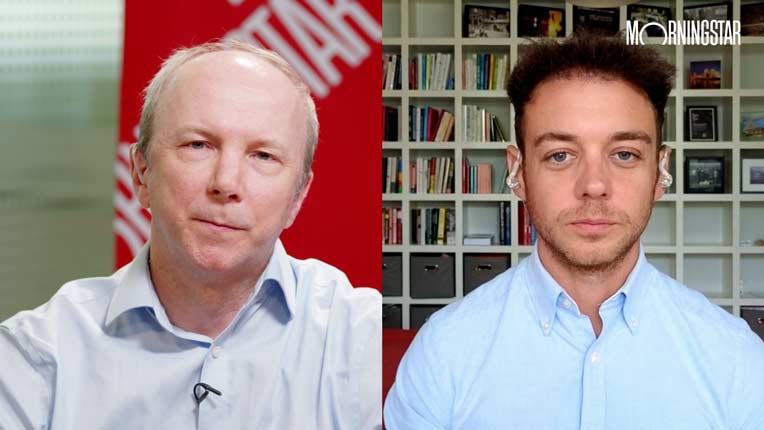This article is part of Morningstar's Guide to Investing for Income
Emma Wall: Hello, and welcome to this Investing for Income Special. I'm Emma Wall and here with me today is Katie Roberts, Senior Investment Director at Fidelity.
Hello, Katie.
Katie Roberts: Hello.
Wall: So, we've been running an Investing for Income Week since Monday, and today is the final day, where we're looking at everything we've already covered, all the sort of income producing assets and talking about how to blend them into an income producing portfolio. So at the moment, where would you say the best income opportunities are coming from with that sort of asset spread?
Roberts: So, we run multi-asset income portfolios for our clients and we believe that for income, and investors who are seeking income, that diverse approach is very helpful, because it offers choices and offers flexibility in terms of that steady, stable income that an investor tends to be looking for.
In terms of the asset classes, asset classes are attractive at different times in the economic cycle and that's why flexibility is important. So, that you can change that asset mix as economic conditions change.
We categorise asset classes into three different categories for income, traditional fixed income asset classes such as investment-grade or government bonds, growth assets such as equities, and then in the middle, hybrid assets, that have characteristics of both growth and traditional income such as high yield.
At the moment, what we're looking at is, we have been reducing the riskier assets in our portfolios, because we're going into a period that looks a little bit more uncertain in markets and whilst those equity assets have been very successful for us in terms of return, we want to lock that profit in for our investors and just take a little bit of risk off the table. So, what we've been doing is adding to our more traditional fixed income holdings in investment-grade in the portfolio and reducing the risk that we're taking.
Wall: Looking then over a sort of longer and medium term, would you say, you'd still have despite the sort of near-term volatility, the strongest conviction in equities, because markets have risen considerably, but I think the general consensus is fixed income, there's only one way to go and that's down?
Roberts: Yes, I agree. I think, on the longer-term outlook, we're still very positive on global growth, and the prospects for global growth, because an economic recovery doesn't happen in a straight line, and summer tends to be a more volatile time for markets, and as we've seen with geopolitical events come back to the fall, with the Ukraine and the Middle East, this tends to be a time when these unpredictable events can add to volatility in markets.
But longer-term, absolutely, we think the global growth story is well-established. We think that will continue, that some of the uncertainty around changing financial policy from the U.S. and the step back from tapering that we saw at the beginning of the year is now more understood by markets. So that uncertainty is going away, although the tapering will continue.
So, I think longer-term absolutely. We would be looking for the right time to start adding risk back into our income portfolios, but what we're trying to do with those multi-asset portfolios for income is very much balance that income and risk conversation. So, where's the best place for income at the right level of risk?
Wall: I think as you mentioned this challenge over the summer, helps to highlight the fact that even though, perhaps equities offer the most attractive opportunities, the importance for a mixed asset portfolio, the importance of making sure you have bonds in there, to balance out the risk and to make sure that when these unexpected events occur you do have a buffer zone?
Roberts: Exactly. The diversification element of using multiple asset classes for income is crucial to maintain that steady, sustainable income for an investor, either someone who is in retirement and needs that regular income or someone who's using that income for other purposes.
So, the way we run our multi-asset portfolio is to deliver very steady, stable income over time and in order to do that, that diversification element is important, because you need to balance the volatility that you get with the riskier assets, where you might get a higher yield with the steady, stable, slightly lower yield from perhaps the fixed income assets, and as economic cycles change and the economies change, that balance should also tilt, because that should take adjustment of the or take account of the risk, that it's in markets and in particular asset classes. Blending those two elements together is very important.
What we also do with our multi-asset income funds is we use more alternative asset classes, such as infrastructure to help balance that diversity. So, an asset class such as infrastructure, we would call a growth asset, but it's uncorrelated with equity. So, it gives you a very steady, stable, long-term income from these infrastructure assets, which tend to be government backed and tend to have very long-term contracts. So, you know what that stream of income is going to be over the long-term, and you can balance that against the higher volatility that you get with equities. So even within our growth asset bucket, we're looking to add diversity there as well.
Wall: Katie, thank you very much.
Roberts: Thank you.
Wall: This is Emma Wall for Morningstar. Thank you for watching.





























